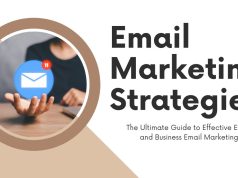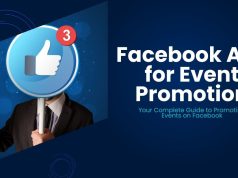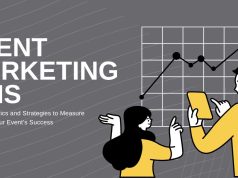Planning, organizing, staging, and analyzing marketing events is a big task. From RSVP management and mass e-mail marketing to data gathering about participants’ engagement with an event, this often involves a level of coordination that made me feel like I was over my head. Nevertheless, thanks to tools like HubSpot, this process can be made simpler in every way. You just need to have one platform for planning your marketing events, as well as how to implement them and what success factors are available.
Why use HubSpot for marketing events?
Before we dig into the details, let’s uncover why HubSpot is such a game-changer for marketing events:
- Unified management: HubSpot integrates event planning, promotion, and follow-up into one dashboard.
- Personalized communication: Segment your audience and tailor event content for better engagement.
- Data-driven insights: Evaluate success with detailed analytics and reports.
- Integrated tools: Its CRM, email marketing, and landing page tools ensure every touchpoint is covered.
With HubSpot, you can focus more on creating unforgettable event experiences and less on managing scattered tools.
Step-by-step guide to using HubSpot for marketing events
Set your event goals and objectives
Every marketing event should start with clear goals. Ask yourself:
- Are you aiming to generate leads?
- Do you want to strengthen relationships with existing customers?
- Trying to position your brand as an industry leader?
Clearly defining your goals will help you leverage HubSpot’s tools effectively. For instance:
- If your goal is lead generation, use HubSpot forms to maximize registrations.
- If it’s brand authority, hub-wide content optimization will be your focus.
Build an eye-catching landing page
Your event’s landing page is its home base. This is where guests will learn about your event and (hopefully) sign up. HubSpot makes building professional landing pages simple with its drag-and-drop editor.
Here’s what to include:
- Compelling visuals: Grab attention with professional images or videos showcasing your event.
- Event details: Clearly outline the date, time, and location (physical or virtual).
- Value proposition: What’s in it for attendees? Highlight speakers, sessions, or key benefits.
- Strong CTA: Ensure your call-to-action (e.g., “Sign Up Now”) stands out.
Pro Tip: Use A/B testing within HubSpot to compare different landing page designs and determine what drives more registrations.
Automate your email marketing
HubSpot’s email automation tools are invaluable for event marketing. Create personalized and automated campaigns to guide your audience through the registration process, remind them about the event, and follow up afterward.
To-dos for email marketing:
- Promotional campaign:
-
- Send engaging emails to your database announcing the event.
- Include dynamic details like the recipient’s first name to boost open rates.
- Reminders:
-
- Automate reminders as the event approaches to keep your audience engaged (e.g., “We can’t wait to see you this Friday!”).
- Follow-ups:
-
- After the event, send a thank-you email. Include a link to access recordings, presentation slides, or exclusive resources.
Use HubSpot’s email reporting features to track open and click-through rates, ensuring continuous optimization.
Create and track event forms
HubSpot forms are perfect for capturing attendee details. Whether you’re adding a form to your landing page or embedding it elsewhere, make sure to ask for important details like:
- Name and email
- Job title or company
- Any specific preferences (e.g., dietary restrictions for in-person events)
To make the process seamless:
- Enable progressive profiling. This feature collects additional information over time while keeping forms short.
- Sync the form with your HubSpot CRM to add registrants directly to your contact database for easy follow-ups.
Centralize your communications with the CRM
HubSpot’s CRM is the backbone of an effective event marketing strategy. Every interaction with your attendees (emails, form submissions, social media interactions) is logged in one place. This allows your team to:
- Personalize communication based on attendee behavior.
- Track engagement levels before and after the event.
- Segment attendees for targeted outreach.
For instance, you might create separate follow-up strategies for leads who attended versus those who missed the event.
Promote your event through multiple channels
HubSpot allows you to amplify your event reach with integrated social media and ad tools. From a single dashboard, you can:
- Schedule updates across platforms like LinkedIn, Twitter, and Facebook.
- Create targeted ad campaigns to reach your ideal audience.
- Track performance metrics in real time to see which promotional efforts yield the best results.
Don’t forget to include the event hashtag prominently across all promotional content, fostering better attendee engagement online.
Leverage real-time reporting during the event
HubSpot shines when it comes to live data. For virtual events, like webinars hosted via HubSpot’s integration with tools like Zoom or GoToWebinar, you can monitor attendee activity as it happens:
- Track registration-to-attendance conversion rates.
- Identify drop-offs during the event to pinpoint areas for improvement in future events.
For in-person events, upload attendee lists to the CRM post-event to track key analytics.
Gather feedback and measure success
After your event, use HubSpot to send feedback surveys to attendees. This valuable data can inform your strategy for future events. Additionally, HubSpot’s reporting features allow you to measure event ROI:
- How many leads were generated?
- How many deals were influenced by the event?
- What was the average cost per lead?
These insights are GOLD when it comes to proving the value of your events to stakeholders.
Tips to enhance your event management experience with HubSpot
- Use workflows for efficiency:
Automate repetitive tasks like sending post-registration emails or segmenting attendees into different lists.
- Collaborate with your team:
With HubSpot’s shared dashboards, your entire team can stay on the same page during every phase of the event.
- Experiment with add-on tools:
HubSpot integrates with a host of event-specific tools like Eventbrite or Hopin. Experiment to see what works best for your events.
Final thoughts on using HubSpot for marketing events
They are a powerful way to connect with audiences, and marketing events are. It’s HubSpot’s job to make it easier, more effective, and more insightful to manage them. HubSpot lets you centralize everything from promotion right through to follow-ups. This enables your audience’s experiences at events to be seamless. Not only do they engage, but they also achieve measurable business goals.
Now is the time to give it a try if you’re not currently using HubSpot for your event marketing! From its user-friendly interface to a wide range of features, planning and executing events that really matter can be yours, whatever your industry or audience.









